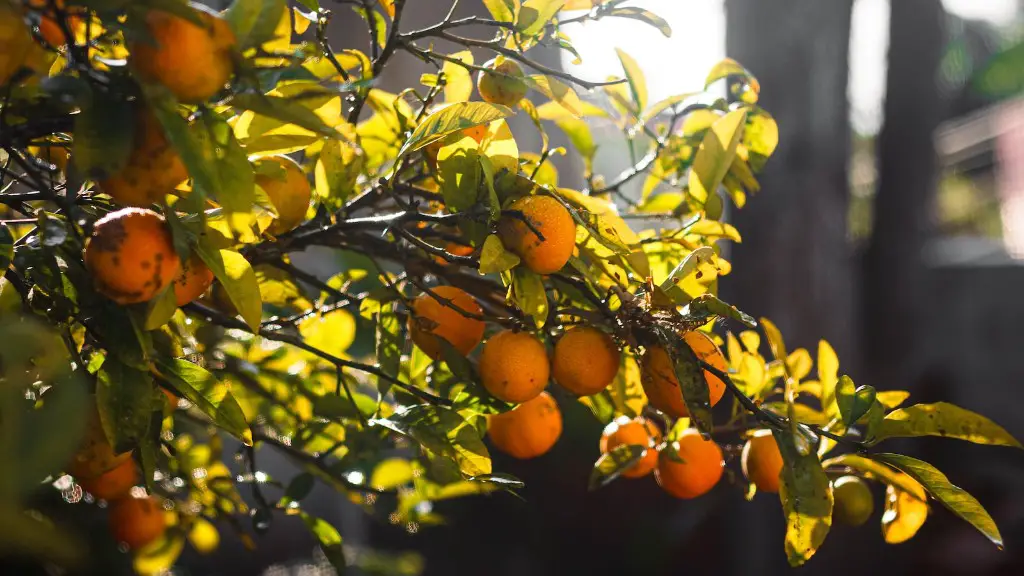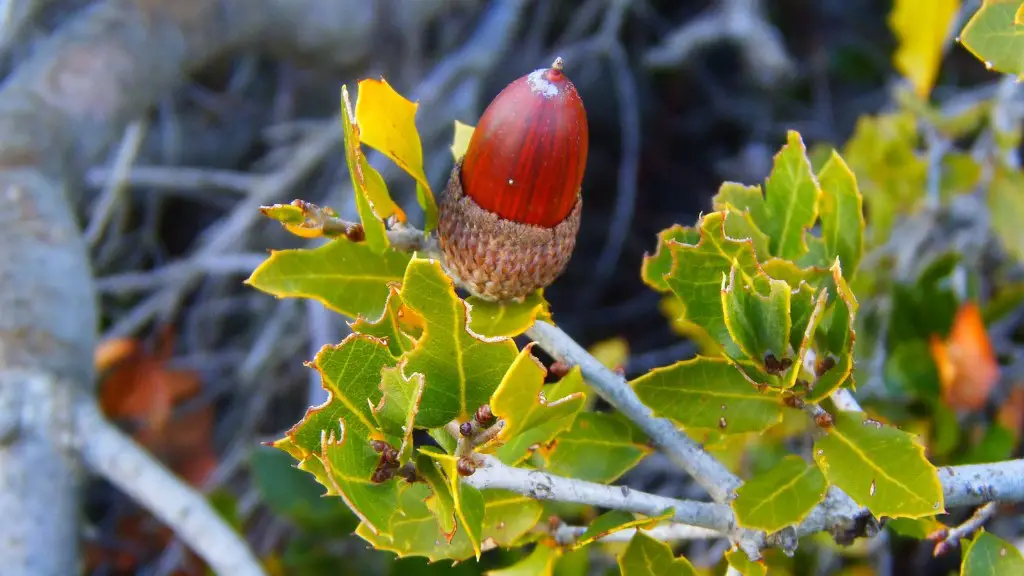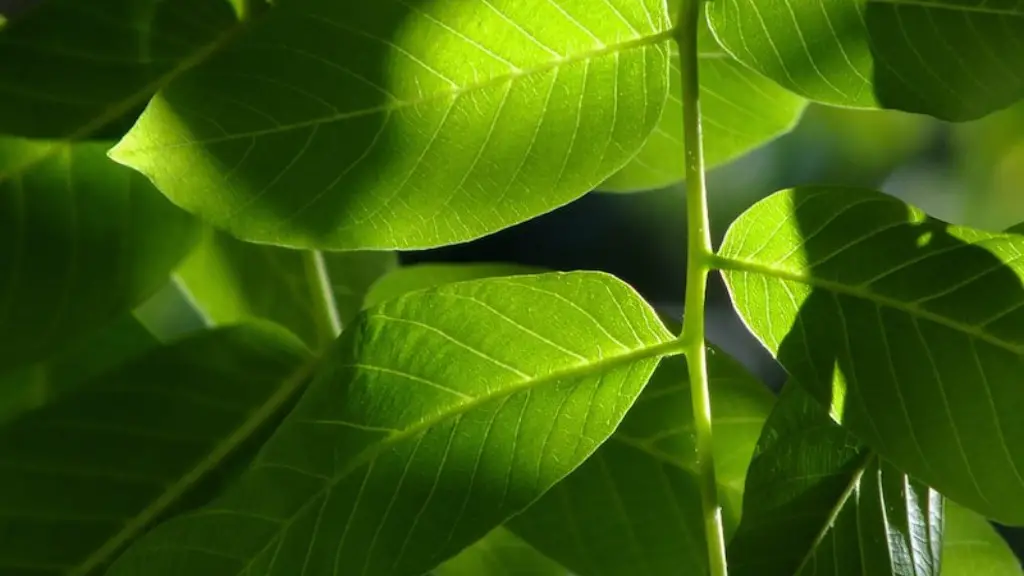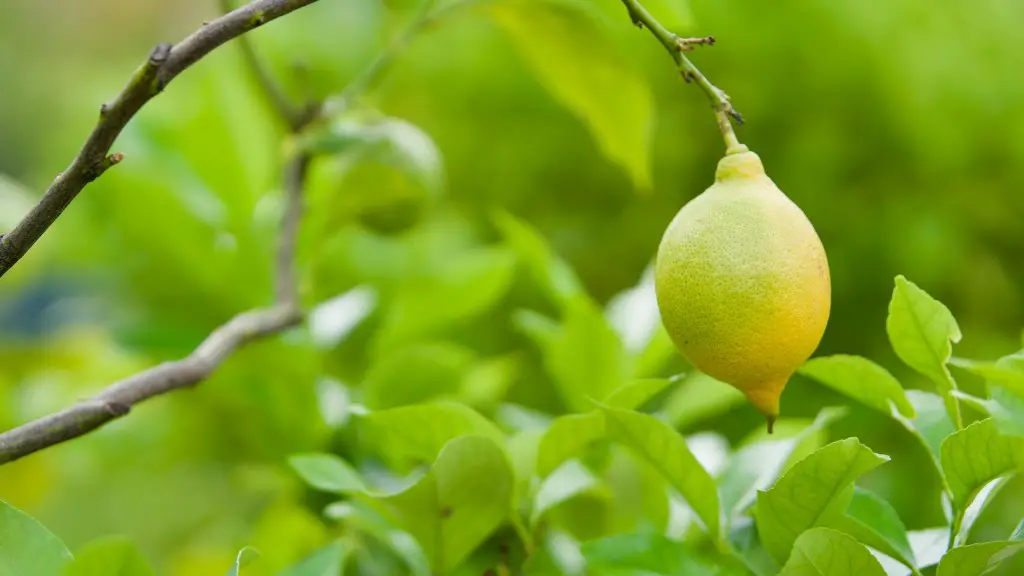Growing a lemon tree from seed is surprisingly easy and requires very little effort. To get started, simply take a ripe lemon and cut it into halves. Remove a few of the seeds and save for planting, discarding the rest. The ideal climate for growing a lemon tree from seed is warm and humid, so if you don’t have access to these, consider using a grow light.
Once you have your seeds, soak them in lukewarm water overnight. This will reduce the chances of them not germinating. To plant, fill a pot with potting soil and make a small, shallow indentation in the soil. Place two or three seeds in the indentation and cover with the soil before lightly patting down the surface. Water the seeds gently, making sure to not over water them.
Place the pot in an area with plenty of natural light, such as near a window. As the sapling begins to emerge, feed with liquid fertilizer to promote root growth. Once the sapling is a couple of inches tall, repot it in a larger pot to enable its continued growth. Make sure to add drainage material such as small stones or gravel to the bottom of the pot before adding the soil.
It’s important to keep the sapling well-watered but not over-watered. Water the soil until it is wet but not sodden. If you live in a dry climate, mist the plant every day or two to increase the humidity in the soil. As the tree grows, prune it regularly to encourage a fuller, denser shape and to help it to produce larger fruits.
Once the lemon tree has matured, it will begin to produce fruit within the first six months. Fertilize your tree every month with a fertilizer designed specifically for citrus fruit trees. Include trace elements such as calcium and magnesium in your fertilizer mix. When harvesting, be sure to pick the lemons while they are still green, leaving them on the tree until they ripen will prevent them from getting their full flavor.
Fertilizing Lemon Trees
Fertilization is an important part of keeping a lemon tree healthy. As stated previously, applying a fertilizer designed specifically for citrus fruit trees will help insure the health of the tree. The fertilizer should include trace elements such as calcium and magnesium to promote healthy growth. Make sure to follow the directions on the package when using a fertilizer as too much can be just as bad as too little. Applying the fertilizer around the base of the tree, where the roots are most concentrated, is the best practice as well as making sure not to disturb the soil or the roots of the tree when doing so.
Fertilizing once a month is the best approach when caring for a lemon tree. In order to have the most nutrient-rich tree, the soil should be tested frequently, especially during the summer months. Applying any additional fertilizers according the soil’s needs is the best way to ensure that your lemon tree will stay healthy.
It is also important to keep an eye on the pH levels of the soil. The lemon trees prefer a slightly acidic soil with a pH level of 6.0 to 6.5. If the soil is too acidic, it can be corrected by adding dolomite lime or wood ashes to the soil. If your soil is too alkaline, you can add sulfur, composted leaves or manure to lower the pH levels and make it more acidic.
Keeping your lemon tree fertilized and your soil pH levels balanced will help ensure you are getting the most out of your lemon tree and that the tree will stay healthy.
Watering a Lemon Tree
Watering a lemon tree is a critical part of the tree’s growth and health. An adequate amount of water must be supplied to the tree to ensure healthy growth and fruit production. Too much water or not enough water can cause serious harm to a lemon tree, so it is important to develop a watering schedule and stick to it.
The amount of water a lemon tree needs can vary depending on the climate in which the tree is growing. Generally, the tree should be watered deeply but infrequently. Water the tree deeply, letting the soil become completely saturated before allowing it to dry out completely. This should be done every two weeks, or longer if there has been a significant amount of rain. Do not water the tree lightly, as this can cause root rot and other health issues.
When checking the soil, it should not be mushy or saturated, if it is you should reduce the watering to avoid over saturation. The tree should also be mulched to help keep moisture in the soil and to help keep weeds and pests away.
It is also important to water the tree at the right time of day. The best time to water a lemon tree is early in the morning, as this will give the tree enough time to absorb the water and not allow it to evaporate in the sun. This is especially important during the summer months, as the soil will dry out much faster.
By following these watering guidelines, a lemon tree will stay healthy and produce large, sweet-tart fruits for years to come.
Transplanting Lemon Trees
Transplanting a lemon tree can be tricky and requires some extra care to ensure the tree doesn’t suffer any shock from the transition. The most important thing to remember when transplanting a lemon tree is to limit the amount of time it spends out of the ground. Generally, lemon trees should be transplanted in the spring or early summer, as these months ensure that the tree will have time to settle in before winter arrives.
When transplanting your lemon tree, make sure to water it well the day before you plan to move it. Then, dig a hole large enough to accommodate the root ball of the tree. Place the tree in the new hole and backfill the dirt, making sure to pat the surface around the tree lightly to eliminate any air pockets.
Water the tree again once it’s in the new location and keep it well-watered for the following weeks. It is also recommended to give the tree a light pruning to help with the transition to its new home. Pruning is best done in the late winter or early spring to ensure the tree does not suffer any shock from too much pruning in one day.
By following these simple steps, you can make sure your lemon tree has a successful transition to its new home and will continue to be fruitful for many years to come.
Diseases Affecting Lemon Trees
Lemon trees are susceptible to a variety of disease, most of which can be avoided with proper care. Common diseases affecting lemon trees include scab, anthracnose and citrus canker. All of these diseases can be prevented or lessened by providing the tree with adequate fertilizer, pruning regularly and keeping it away from other citrus trees.
Scab is caused by a fungus which can infect a lemon tree, causing the immature fruit to become deformed and leathery. This can be avoided by making sure the tree is fertilized regularly and avoiding overhead watering. Anthracnose is another fungus which can cause lesions on the leaves of a lemon tree and can be prevented by avoiding overhead watering and making sure the tree gets the right amount of sunlight.
Citrus canker is a bacterial disease which can cause lesions on the leaves and fruit of a lemon tree. This can be prevented by making sure the tree is pruned correctly and avoiding too much water. If a lemon tree is affected by any of these diseases, it should be treated immediately to avoid further damage.
By following the correct procedures, diseases affecting lemon trees can be avoided. Proper fertilization and pruning, as well as avoiding overhead watering and exposing the tree to too much sun can help prevent these diseases and keep the tree healthy.
Harvesting Lemons
Harvesting lemons from a lemon tree is one of the most rewarding parts of growing a lemon tree. Lemons can take up to a year to produce fruit and harvested lemons can be used in many different ways. When picking a lemon, make sure it is ripe. A ripe lemon should feel slightly soft to the touch and have a yellowish-green color.
It is also important to be gentle when harvesting a lemon to ensure that it doesn’t get damaged or bruised. Gently twist the lemon from the branch and cut it off with a pair of pruners. Since lemons are acidic, it’s best to wear gloves when picking to protect your hands from the juice.
Once the lemons are harvested, they should be stored in the refrigerator. This will help keep the lemons fresh for longer. The lemons can also be used to make juice or added to recipes for baking or cooking.
Harvesting lemons from a tree can be a rewarding experience and the lemons themselves can be used in many different ways. A few ripe lemons from a tree can make a delicious snack or provide the ingredients for a delicious meal.




